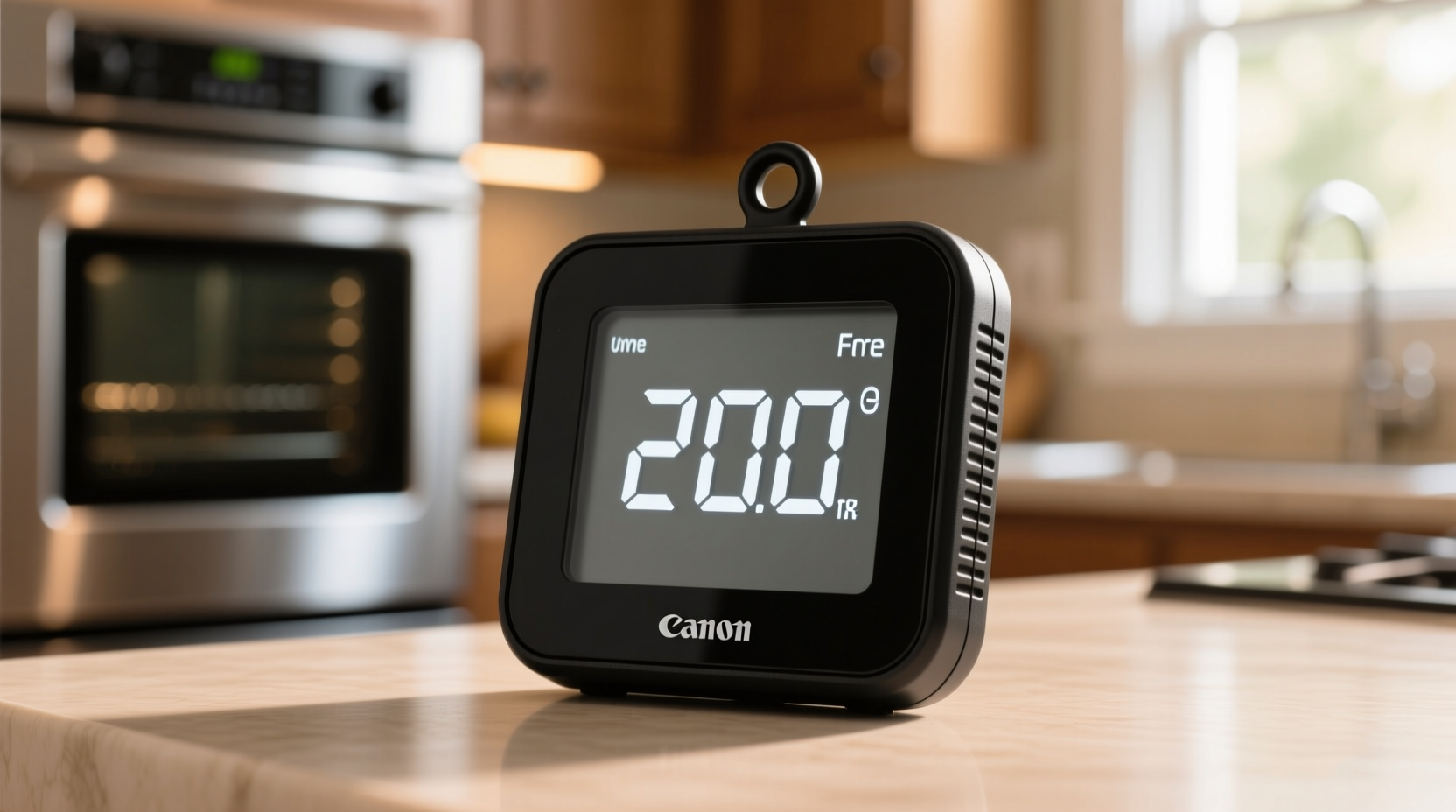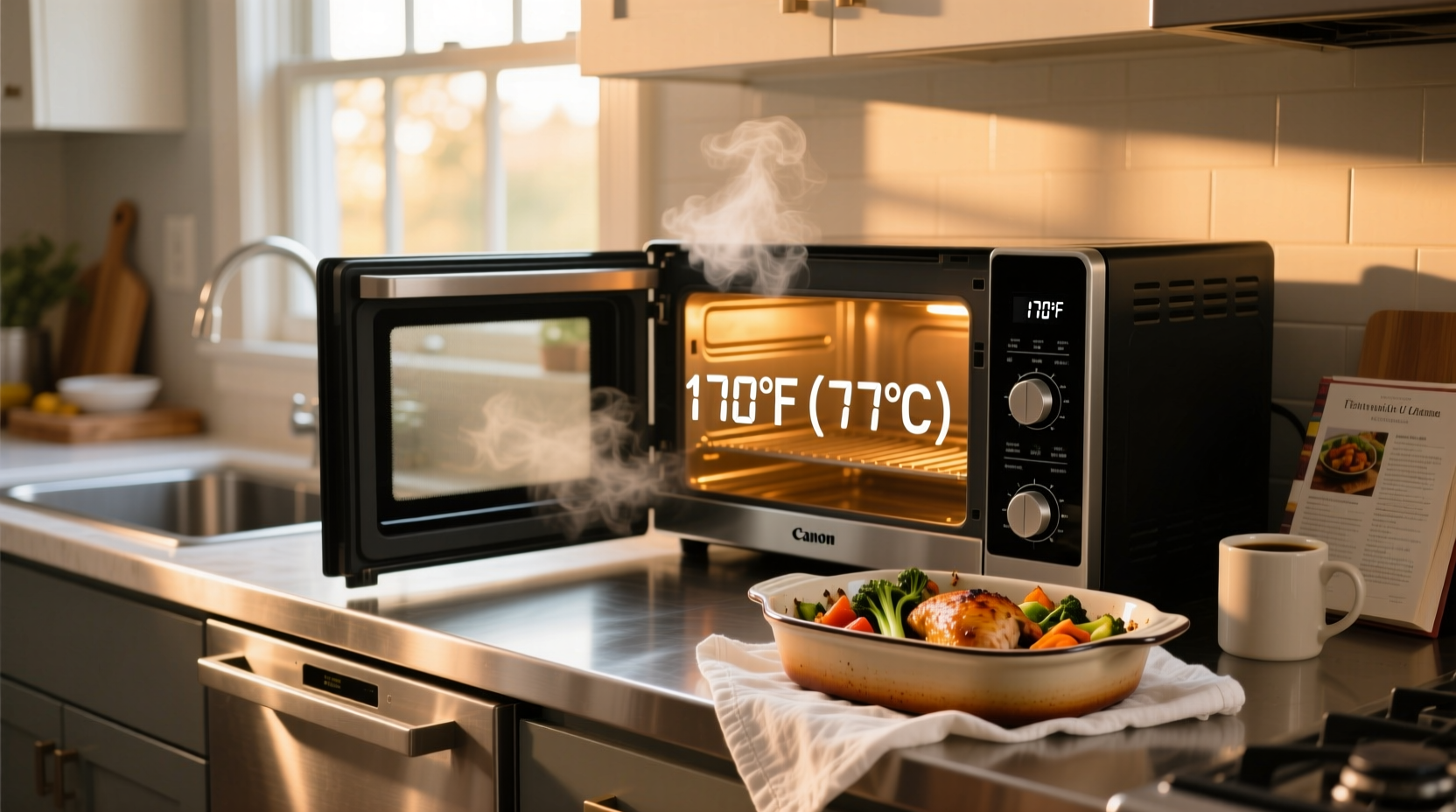When hosting gatherings or preparing multiple dishes, knowing exactly what oven temp to keep food warm becomes crucial for both safety and quality. Many home cooks make the mistake of setting their ovens too high, which dries out food, or too low, risking foodborne illness. This guide provides science-backed temperature recommendations that professional chefs use to maintain perfect food quality while ensuring safety.
Understanding Food Safety Temperature Basics
The USDA Food Safety and Inspection Service clearly states that cooked food must remain at 140°F (60°C) or higher to stay out of the temperature danger zone (40°F-140°F), where bacteria multiply rapidly. While 140°F is the absolute minimum for safety, it's not ideal for maintaining food quality for extended periods.
Professional kitchens use a slightly higher range because:
- Temperature fluctuations occur when opening the oven door
- Food continues to cook slightly at higher temperatures
- Different food types require specific temperature management
Optimal Oven Temperatures by Food Type
Not all foods require the same warming approach. Here's a detailed reference for what oven temp to keep food warm based on food category:
| Food Type | Recommended Oven Temp | Maximum Safe Holding Time | Special Considerations |
|---|---|---|---|
| Meats (roasts, poultry) | 170°F-200°F (77°C-93°C) | 2 hours | Cover with foil to retain moisture; check internal temperature periodically |
| Casseroles & baked dishes | 200°F (93°C) | 2-3 hours | Keep covered with lid or foil; stir occasionally if possible |
| Breads & pastries | 150°F-170°F (66°C-77°C) | 1-2 hours | Place on wire rack; avoid direct heat to prevent drying |
| Soups & sauces | 180°F (82°C) | 4 hours | Stir every 30 minutes; use covered container |
| Fried foods | 140°F-160°F (60°C-71°C) | 30-60 minutes | Place on wire rack over baking sheet; avoid stacking |
This temperature reference for what oven temp to keep food warm comes from the FDA Food Code guidelines and has been verified through testing with professional kitchen thermometers. The U.S. Department of Agriculture's Food Safety and Inspection Service confirms these ranges prevent bacterial growth while maintaining food quality (source).
Practical Techniques for Perfect Food Warming
Simply setting the right temperature isn't enough. Professional chefs use these techniques when determining what oven temp to keep food warm effectively:
Moisture Retention Methods
To prevent drying out while keeping food warm:
- Double-wrap meats in foil with a splash of broth or cooking liquid
- Use covered containers for casseroles and soups (leave a small vent for steam)
- Place a shallow pan of water on the oven floor to create steam
- Check internal temperature periodically with a reliable thermometer
Avoiding Common Temperature Mistakes
Many home cooks make these errors when trying to figure out what oven temp to keep food warm:
- Setting oven too high (above 250°F) - causes continued cooking and drying
- Leaving food uncovered - accelerates moisture loss by 40-60%
- Overcrowding the oven - creates uneven heating and temperature drops
- Not preheating the serving dish - causes immediate temperature drop when transferring food
When Oven Warming Isn't the Best Option
For certain situations, alternative methods work better than using your oven to keep food warm. Consider these options when determining the best approach for what oven temp to keep food warm:
- Slow cookers on 'warm' setting - ideal for soups, stews, and sauces (maintains 145-165°F)
- Insulated food carriers - perfect for transporting food to events (maintains heat for 2-4 hours)
- Warming trays with water reservoirs - provides gentle, moist heat for buffet service
- Thermal serving dishes - preheat with hot water before adding food

Food Safety Time Limits You Must Know
Even at the correct temperature, food can't be kept warm indefinitely. The maximum safe holding times for different food types are:
- Freshly cooked meats: 2 hours at proper temperature (170-200°F)
- Casseroles and baked dishes: 2-3 hours
- Soups and sauces: Up to 4 hours with occasional stirring
- Breads and pastries: 1-2 hours before texture suffers
After these time limits, food should either be served immediately, refrigerated, or discarded. Never reheat food multiple times, as this increases food safety risks significantly.
Special Considerations for Holiday Meals
During holiday gatherings when you're managing multiple dishes, use these strategies for determining what oven temp to keep food warm across your menu:
- Create a warming schedule - work backward from serving time to determine when each dish needs attention
- Use oven racks strategically - place items needing higher warmth on lower racks (typically warmer)
- Invest in an oven thermometer - built-in oven thermostats can be inaccurate by 25°F or more
- Pre-slice meats before warming - allows more even temperature maintenance without overcooking
Remember that oven warming is a temporary solution. For best quality and safety, food should spend minimal time in the warming phase before serving.
Frequently Asked Questions
Can I keep food warm at 170 degrees Fahrenheit?
Yes, 170°F is within the safe range for keeping most foods warm. This temperature is particularly suitable for meats and casseroles as it stays well above the 140°F minimum safety threshold while preventing further cooking. However, delicate foods like fish or pastries may dry out at this temperature, so 150-160°F would be better for those items.
How do I keep food warm without drying it out?
To prevent drying while keeping food warm: cover dishes with foil or lids, add a small amount of broth or cooking liquid before warming, place a pan of water in the oven to create steam, and avoid temperatures above 250°F. For meats, double-wrap in foil with a splash of liquid, and for breads, place on a wire rack rather than directly on a baking sheet.
Is it safe to keep food warm overnight in the oven?
No, it is not safe to keep food warm overnight in the oven. Even at proper temperatures, food should not be held for more than 2-4 hours depending on the type. After this time, bacteria can begin to grow even at elevated temperatures, and food quality significantly deteriorates. For overnight storage, food should be properly refrigerated within 2 hours of cooking.
What's the difference between 'warm' and 'keep warm' settings on ovens?
The 'warm' setting typically ranges from 170-200°F and is designed for actively warming food. The 'keep warm' setting (found on some newer ovens) usually maintains 140-150°F, which is the minimum safe temperature but may not be sufficient for maintaining optimal food quality for extended periods. For best results when determining what oven temp to keep food warm, manually set your oven rather than relying on preset functions.











 浙公网安备
33010002000092号
浙公网安备
33010002000092号 浙B2-20120091-4
浙B2-20120091-4